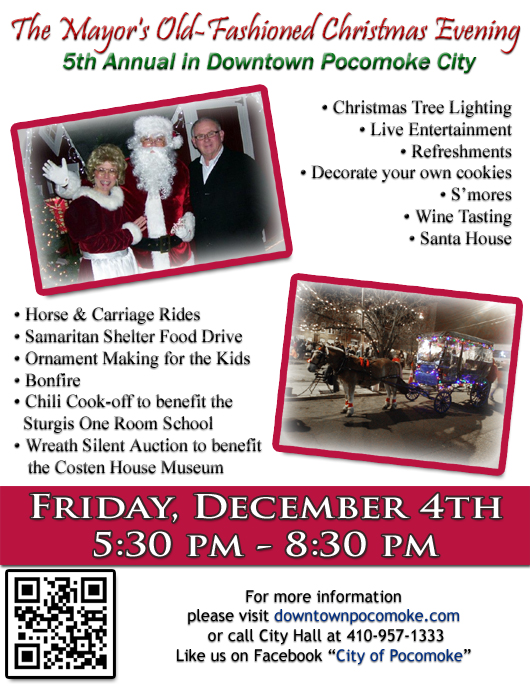This place (Newtown) is a pretty snug little village, containing about 500 clever and hospitable inhabitants; it has good wide streets, quite clear of that "eye sore," known mostly over the Peninsula by the name of "deep sand"; the houses, though built of frame, are generally built substantially and with some discretion and taste; there are two neat, new, and quite handsome frame churches in it; as for the merchants of the place, suffice it to state that they are very clever and hospitable. F. Mezick, Esq., the landlord with whom I stopped, and his very obliging and jolly assistant, are richly deserving of a passing notice, for the good treatment and the extension of the many civilities to "the stranger."
(Reader-friendly viewing of news archives/historical archives material)
In its day Franklin City was a bustling Eastern Shore town..a major oyster shipping center for the east coast. But that began to change with the opening of the Chincoteague causeway in 1922. Franklin City's economic decline along with erosion spurred by mother nature has virtually erased all evidence of the once thriving community.
But this was the Franklin City of a bygone era.
May, 1890
The Sun (New York)
Curious Virginia City
BUILT ON STILTS IN AN ACCOMACK SALT MEADOW.
Much Wealth Amid Odd Surroundings -- The Tide Cleans the Streets -- Water from Beneath the Sea -- The Wild Fowl.
FRANKLIN CITY, Accomack, Va., May 6. --
For time out of mind before the year 1877 the extreme northeast corner of the State of Virginia had been the possession of the Franklin Family. It was not a very valuable corner as seen by the observer. There was a narrow strip of low-lying arable land, nowhere more than ten rods wide, a half a mile wide salt marsh, and then the bay, not named on the maps, but now called Jinkatig Bay by people hereabouts because Chincoteague Island lies in the bay and Jinkatig is the way they pronounce the name of the island. But though of little value as dry land, the Franklin estate under water was a possession worth owning, because the bay affords some of the finest oyster planting beds to be found anywhere, and for more than 200 years the people of Virginia peninsula have resorted to the natural beds found there for oysters.
Since the days of reconstruction following the war the system of planting seed oysters has been adopted with great success, and up to the year 1877 already mentioned hundreds of sloop loads of oysters gathered in that bay were every year carried out to sea and away to the great oyster market, which in those days could be found at the East River and Broome street, New York, but now is situated in two blocks along North River at West Tenth street. It was a great business even then, but subject to one drawback that it does not now suffer from. In those days the sailing vessels were often becalmed or got aground for just a long enough time to spoil the oysters, and the cargo was lost, for there was no marine insurance business around the bay. In 1877, however, the oyster business got a lift. Capitalists who owned lines of railroad on the peninsula saw the sloop and schooner traffic in oysters and with covetous eyes, and eventually surveyed a route from Harrington, Del., down along the coast to a point on old Judge Franklin's swamp in the northeast corner of the State of Virginia. The Judge welcomed the railroaders, and in consideration of their locating the proposed road there gave them half his swamp.
Thereupon the track was laid and a pier built into the bay from the edge of the swamp. The track across the swamp was laid on a cow trestle. Then a few piles were driven in the swamp at the shore end of the pier, a little one-room shanty was brought down the road on a flat car and set upon the piles, and then, in honor of the former owner of the marsh, it with the pier, was named Franklin City. The boom in Franklin City was on from that day, for Judge Franklin at once laid out his part of the marsh in building lots and sold them for improvement. On an average two houses have been built there every year since, and none has been destroyed. Franklin City now contains nearly two and a half score of houses but it is only fair to say that the larger part of them has been erected within three years.
Franklin City is one of the oddest cities to be found anywhere, it is a city set on stilts. Every house stands on piles, and is from three to four feet above the surface of the ground. There is a huge frame hotel that towers above the surrounding houses like a bay barn above a cow shed on a New York farm. There are two avenues and two cross streets, ungraded and unworked, of course.
There are houses, including one dwelling built on piles out over the bay. There are pig pens and stables set on piles like the dwellings, and elevated board walks run from the houses to the outbuildings. A dozen of the dwellings are low, neat cottages. The rest are shanties of various sizes. But the one most notable characteristic of the place is the oyster shell. The railroad where the low trestle once stood is ballasted with oyster shells. Looked at on a hot day, as it lies gleaming white on dark green marsh, the roadway is enough to five a nervous man the headache. The bulkheads along shore are filled in with oyster shells. The more enterprising citizens are gradually making land by filling in their lots with oyster shells, and by and by, where now only walks on piles are found, there will be substantial, but not-to-be-cultivated land.
There is neither sewer nor drain in Franklin city, but for two very good reasons, a doctor is rarely called for. One reason is that, whenever a southeast gale rages out at sea, and the ocean is piled up on the long sea wall, called Assateague Beach that keeps the waves from rolling in on Franklin City, the tide rises so high that Franklin City gets a bath. The tide sweeps across the lots and through the streets and flushes them out. The other reason is that the drinking water is excellent. Some of the wells are sunk in the bay itself, and sweet water is drawn up so to speak, from the bottom of the sea. They use driven wells, and every well draws water in an inexhaustible quantity from sixty feet below the surface.
Equally interesting with the city are its people. They are a curious mixture of Jersey and Maryland families. Every soul there is more or less directly connected with the oyster business, save only the trainmen employed by the railroad. The men dress in long-legged rubber boots, twilled cotton overalls, and jackets, sou'westers, which they wear on their heads at this season with the flannel or lining side out. They are all expert boatmen, boat builders, and sail makers; they can and do tong, dredge, and cull oysters to a man. They wear their beards full, their faces are red, their hands hard, and their manners bluff. They never lock their doors at night, because there is not a man there who would steal money, though they do say that unaccountable mistakes are made when gathering the oyster harvest, by which under-water farm lines are crossed and the reaper gathers where he did not sow. The women dress in calico and they wear sun bonnets made of the same low-priced material. They are a handsome lot, however, old or young, calico or no calico.
To look at the people, men and women, as they go about the streets, a stranger would say they were a contented lot of laborers working at a dollar a day or thereabouts. Their dress and their homes are about like what may be found among American laborers in New England villages.
But let the stranger go into the store of Postmaster Bill Gibbs after the passenger train arrives at 2 o'clock in the afternoon, and watch the distribution of the mail. It is an astonishing mail for such a looking town. A dozen men in their rough clothes are awaiting it, and the letters are passed over the counter as they answer their names. They open the envelopes, which have the names of well-known wholesale oyster dealers in New York and Philadelphia printed on the corners and from half of them out drop checks and statements comforting to look upon. When the mail has been delivered and the men have hurried away, a talk with Mr. Gibbs shows that for a dozen men who have been there in brown-twilled overalls and long-legged boots, the average income is not far from $7,000 a year.
Franklin City does not grow, because its sole source of income is now fully developed. Every inch of ground that can be planted to oysters is now occupied. There is but one chance for an addition to its population, and that would be but a fleeting addition. The waters of the bay and the creeks about here swarm with wild fowl in the season, and the traveler who leaves New York city at 9 o'clock in the morning gets here early in the afternoon. New York sportsmen might buy a patch of marshland and build a club house on it and, coming here at anytime between Nov. 1 and April 1, have no end of sport. Canvasbacks are scarce, but red heads, black heads, geese and brant well make up for the lack. Then there are the flocks of quail back in the country and from April 1 well on into June snipe and shore birds in quantities fit to make a sportsman's hair curl. The fishing in the bay, too, is superb, the catches of weakfish with hook and line often running into the hundreds. It is a land of low prices for home products, and the sportsman even of slender means who could not enjoy life here is not worthy of his title.
A Curious Virginia City
Spears
John R.
Sun
New York
May 7, 1890
Do you have a local memory to share with PPE readers or something of interest your parents or grandparents told you about? Please send to tkforppe@yahoo.com .
When you're clicking around the Internet remember to check in with The Pocomoke Public Eye. We strive to be a worthwhile supplement to your choices.





































